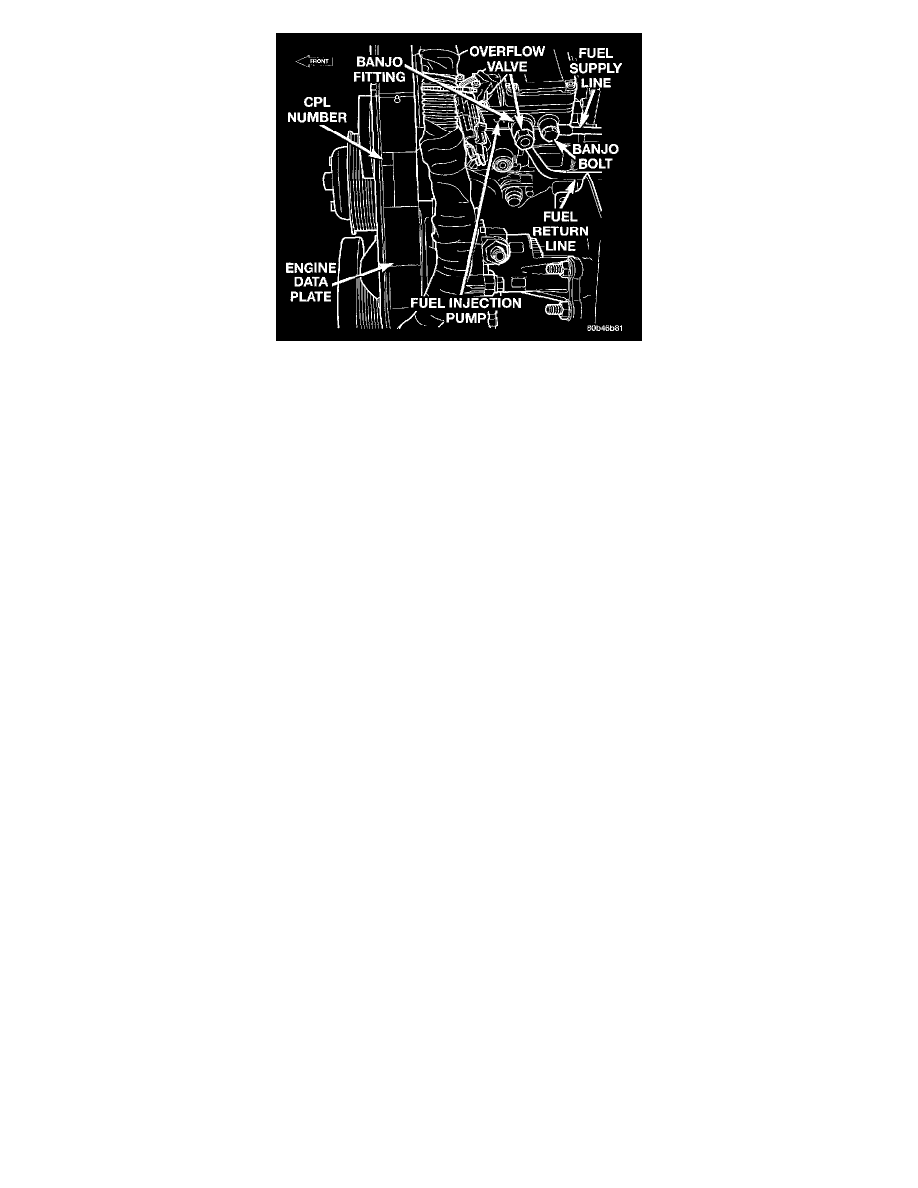RAM 2500 Truck 4WD L6-5.9L DSL Turbo VIN 6 (1999)

Fuel Supply Line Banjo Bolt
1. Loosen, but do not remove, banjo bolt holding low-pressure fuel supply line to side of fuel injection pump. Place a shop towel around banjo fitting
to catch excess fuel.
The fuel transfer (lift) pump is self-priming: When the key is first turned on (without cranking engine), the pump operates for approximately 2
seconds and then shuts off. The pump will also operate for up to 25 seconds after the starter is engaged, and then disengaged and the engine is not
running. The pump shuts off immediately if the key is on and the engine stops running.
2. Turn key to CRANK position and quickly release key to ON position before engine starts. This will operate fuel transfer pump for approximately
25 seconds.
3. If fuel is not present at fuel supply line after 25 seconds, turn key OFF. Repeat previous step until fuel is exiting at fuel supply line.
4. tighten banjo bolt at fuel supply line to 24 Nm (18 ft. lbs.) torque. Primary air bleeding is now completed.
5. Attempt to start engine. If engine will not start, proceed to following steps. If engine does start, it may run erratically and be very noisy for a few
minutes. This is a normal condition.
6. Continue to next step if:
-
The vehicle fuel tank has been allowed to run empty
-
The fuel injection pump has been replaced
-
High-pressure fuel lines have been replaced
-
Vehicle has not been operated after an extended period
CAUTION: Do not engage the starter motor for more than 30 seconds at a time. Allow two minutes between cranking intervals.
7. Perform previous air bleeding procedure steps using fuel transfer pump. Be sure fuel is present at fuel supply line before proceeding.
8. Crank the engine for 30 seconds at a time to allow air trapped in the injection pump to vent out the drain manifold.
WARNING: THE FUEL INJECTION PUMP SUPPLIES EXTREMELY HIGH FUEL PRESSURE TO EACH INDIVIDUAL INJECTOR
THROUGH THE HIGH-PRESSURE LINES. FUEL UNDER THIS AMOUNT OF PRESSURE CAN PENETRATE THE SKIN AND CAUSE
PERSONAL INJURY. WEAR SAFETY GOGGLES AND ADEQUATE PROTECTIVE CLOTHING AND AVOID CONTACT WITH FUEL
SPRAY WHEN BLEEDING HIGH-PRESSURE FUEL LINES. ENGINE MAY START WHILE CRANKING STARTER MOTOR.
9. Engine may start, may run erratically and be very noisy for a few minutes. This is a normal condition.
10. Thoroughly clean area around injector fittings where they join injector connector tubes.
